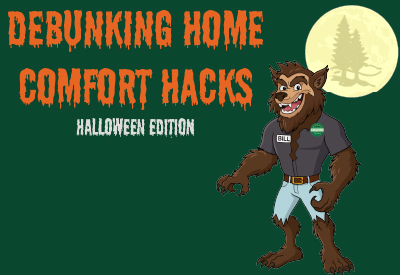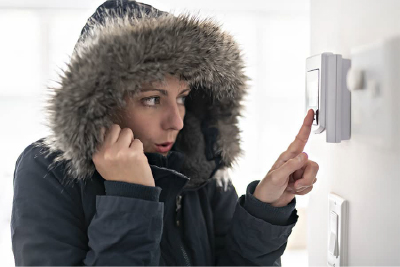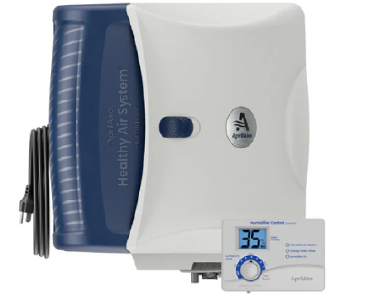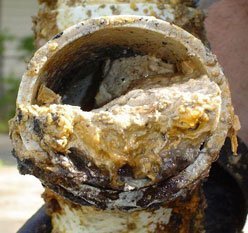
October 2025
By: Josh Walejewski
Read Time: 3 Minutes
There’s something about October in Wisconsin. The first frost lands, pumpkins crowd the porches, and it marks the first month most of us flip the thermostat to heat mode. I’ve seen a lot of “home comfort hacks” floating around the internet (and TikTok) lately—some helpful, some… not so much. In this post, we’ll separate the keepers from the junk and label each one for what it is: Trick or Treat.
So, grab a mug of your favorite fall flavor. We’ll walk through the most talked about home hacks and determine whether they are hocus-pocus ‘Tricks’ or certified ‘Treats’.
HVAC: Tricks or Treats
Closing Vents in Unused Rooms Saves Energy
It sounds tidy: if no one is using the guest room, why send it air? The problem is your duct system isn’t a garden hose you can pinch; it’s a pressure network. Close enough vents and the blower has to muscle through higher static pressure, which can hike energy use, increase noise, and put unnecessary strain on equipment.
Verdict: 🎃☠ Trick.
If certain rooms run hot or cold, the problem is likely due to an improperly sized system, poor ductwork design. It is not recommended to close vents as this can do more harm than good.
Set The Fan To “On” For More Even Temps
If your upstairs bedrooms never quite settle—too warm in July, too chilly in January—constant mixing can help. Running the blower blends pockets of air so the whole house feels more uniform. You’ll also push more air through the filter, improving your home’s indoor air quality.
Verdict: 🍬😎 Treat (with a bill bump).
Depending on your furnace’s blower motor efficiency, expect roughly $10–$40/month more in electricity if you run the fan 24/7. Many smart, modern thermostats can let you program a schedule for fan operation and also include a ’Circulate’ mode that runs the fan part-time; that helps balance comfort and efficiency.
If you are like me and simply looking to be more comfortable while sleeping, set the fan to “On” before bed, then back to ‘Auto’ when you wake.

Cranking The Thermostat Really High or Low Will Heat/Cool Faster
We’ve all done it: you come in from walking the dog on a chilly morning, so you jab the heat up six degrees, hoping for turbo heat mode. The system doesn’t change output because you asked louder. It just runs longer and often overshoots your desired temperature.
Verdict: 🎃☠ Trick.
Use scheduled setpoints, timed holds, and the “preheat/precool” features on smart stats. Cranking your thermostat up/down just puts unnecessary wear and tear on your equipment.
A Bigger AC or Furnace = Better Comfort
Bigger feels like a car with more horsepower, until the house turns sticky, noisy, and drafty. Oversized systems short cycle, which means more hot/cold spots throughout your home, less dehumidification in summer, higher energy bills, and shortened life spans.
Verdict: 🎃☠ Trick.
The sweet spot is a correctly sized system, ideally with variable speed, so you have more even temperatures throughout your entire home.
Completely Cover Your Outdoor AC During Winter
A full wrap/cover on your outdoor AC unit looks protective… but it often causes more harm than good. A full cover traps moisture, leading to rust and corrosion of electrical components/connections. Additionally, it creates a cozy place for critters like mice to shack up in during the winter.
Verdict: 🎃☠ Trick.
It’s best to use a top cover or ‘AC Topper’ to keep leaves, snow, and other debris out. Leaving the bottom open ensures that ventilation is adequate, and it helps prevent mice from taking refuge. Have a heat pump? Don’t cover at all, they run all winter.

Humidity Helps You Feel Warmer
If winter in Wisconsin feels sharper than your thermostat suggests, you’re not imagining it. Dry air pulls moisture from your skin and nasal passages and lets heat escape faster—so 69°F can feel more like 66°F. Meanwhile, wood flooring separates, trim creaks, and static turns doorknobs into little tasers.
Verdict: 🍬😎 Treat.
This is true—and it’s a big reason whole-home humidifiers are so popular in SE Wisconsin. At the right humidity, you’ll feel comfortable at a slightly lower temperature, woodwork holds its shape, and static shocks stay at bay.
Plumbing: Tricks or Treats
“Flushable” Wipes Are Safe If the Packaging Says So
Labels can say “flushable” and still be a bad idea. In sewer lines, wipes are the usual suspects behind slowdowns and weekend clogs. There is no official, government-mandated standard to define what constitutes a truly “flushable” wipe.
Some manufacturers claim and market their wipes as “flushable” because they can physically pass through a toilet and will ‘break down’ eventually. However, the reality is that flushable wipes can take months to completely break down, if at all.
Verdict: 🎃☠ Trick.
Bag and bin them. Your drains and septic system will last longer, and future you will be grateful for avoiding the headache.
Pumpkin Guts Can Be Put Down the Disposal
Every October, our techs meet the same orange culprit: long strings and starch wrapped around an impeller. You may think your garbage disposal has the horsepower to chew through most veggies, but this is not the case with pumpkins.
Verdict: 🎃☠ Trick.
It’s best to compost or trash pumpkin scraps. If your disposal starts growling after pumpkin carving night, we can rescue it.

It’s Okay to Pour Hot Grease Down the Drain as Long as It’s With Hot Water
Fresh off the stove, grease looks harmless—silky, liquid, obedient. Add a blast of hot water, and it feels like you’re “rinsing it away.” But a few feet into your plumbing, the water cools, the grease congeals, and you’ve basically buttered the inside of your pipes.
It doesn’t just sit there, either—it turns into flypaper, grabbing scraps, food bits, and anything else until you’ve built a slow drain or a full-on clog.
Verdict: 🎃☠ Trick.
Skip the rinse-and-hope routine. Let grease solidify in a can or glass jar, then toss it. I always keep a few empty glass pickle jars handy to pour grease into and dispose of when they’re full. Be sure to wipe pans with a paper towel before washing so you’re not sending a greasy film through your dishwasher or down the drain if hand washing.
Big batch of fryer oil? Allow the oil to cool completely, then pour it into a sealable container like a milk carton or old jug, and throw it in the regular trash. Even better, take it to a local drop-off where the oil can be recycled or properly disposed of.
Electrical: Trick or Treats
It’s Okay to Run Space Heaters on Power Strips
Space heaters feel harmless, but many can pull up to 1,000–1,500 watts (8–12.5 amps). That’s a heavy, continuous load, and those little plastic power strips weren’t built for it. Extension cords aren’t better unless they’re short, heavy-gauge (12 AWG) and rated for the load, and even then, it’s not best practice.
Verdict: 🎃☠ Trick (& dangerous).
Plug space heaters directly into a wall outlet—ideally on a dedicated circuit—with the heater on the floor (not on carpet), level, and clear of anything within 3 feet. Don’t use power strips, cube taps, or daisy-chained cords and never leave a space heater running unattended. Units with tip-over & overheat protection are safest.
Whole-Home Surge Protection is a No-Brainer
There are many ways your home could experience a power surge. Besides weather events, even things like utility switching, downed lines, and neighborhood events can still spike voltage, causing a surge. Modern homes are full of expensive electronics with sensitive boards: furnaces, fridges, garage-door openers, TVs, PCs, stereo systems gear are just a few that come to mind.
Verdict: 🍬😎 Treat.
Panel-level, whole-home surge protection is inexpensive insurance, and it can pay for itself in a single event of a power surge. The cost of a new refrigerator alone can cost 2-6 times as much as installing a whole-home surge protector.
Final Thoughts
Home hacks are fun—but repair bills aren’t. If a “hack” sounds a little too clever, it probably is. Stick to fixes that protect comfort, safety, and your wallet. If you’ve got a stubborn room, a noisy pipe, or electrical issue, get in touch with us and we’ll point you to the right next step.
Read more blog posts from Kettle Moraine Heating & AC.
About the Author
Josh Walejewski
Josh is a business professional who has worked in the HVAC industry since 2017. With a Bachelor of Applied Arts and Sciences Degree (B.A.A.S) in marketing and sustainable business management from the University of Wisconsin, he has a passion for all aspects of HVAC, business, marketing, and environmental stewardship.




